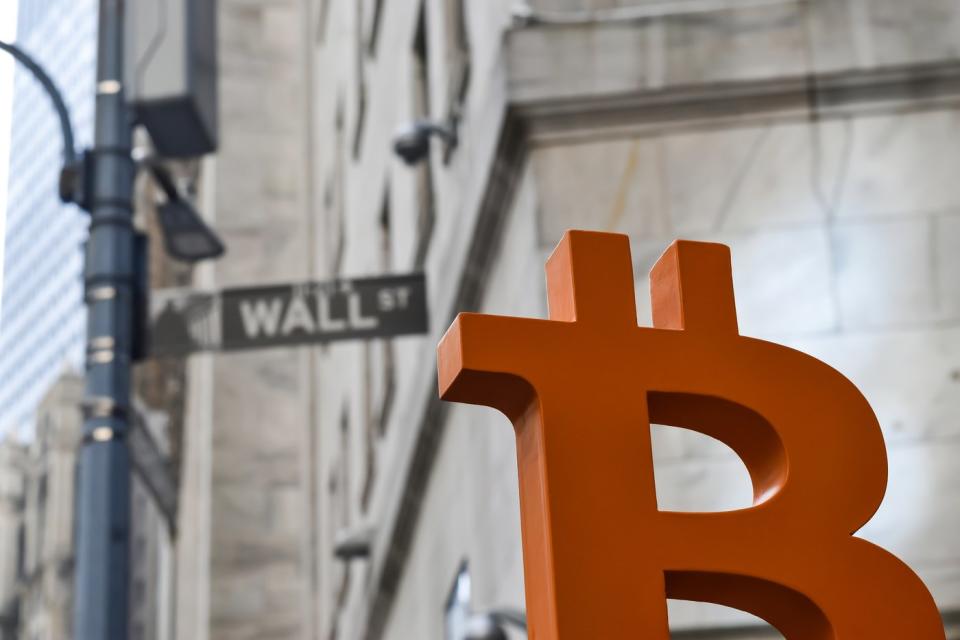Will the Bitcoin Halving Create Overnight Millionaires?
Now that the initial euphoria around the new spot Bitcoin (CRYPTO: BTC) exchange-traded funds (ETFs) has started to fade, it's time to move on to the next major catalyst for Bitcoin: the halving event in April. According to a growing number of analysts, this could really send its price soaring.
In fact, according to Bitcoin ETF issuer Grayscale (NYSEMKT: GBTC), the impact of this halving could exceed any of the three previous Bitcoin halvings. But is that really the case? There are three key reasons this event might end up disappointing crypto investors.
1. Buy the rumor, sell the news
As we've seen with the spot Bitcoin ETFs, the market is getting a lot smarter about pricing in the impact of each new Bitcoin event. If you subscribe to the efficient markets hypothesis, which says that the market efficiently prices in new information about any asset, then this is exactly what you would expect.
In the case of the Bitcoin ETFs, the market had a good grip on when they should come along, as well as which firms were likely to win approval from the Securities and Exchange Commission (SEC). So it didn't come as much of a surprise when the SEC finally approved the spot Bitcoin ETFs on Jan. 10.
The market had already priced in the effect of this move. In the six months from June 2023 to January 2024, the price of Bitcoin soared in anticipation. Thus, when the news finally came, Bitcoins prices actually headed lower -- not higher, as many people had thought. As it turned out, the preliminary gains were a bit too optimistic in the short term.
So, could the same thing happen again, this time with the halving? At the end of last year, some analysts were already starting to predict that some of the halving impact had already been priced in. This makes sense, given how much attention Bitcoin now has from Wall Street and big institutional investors.
The halving is no longer a surprise event for them, as it might have been back in 2012, 2016, or even 2020. It's a highly predictable thing with several cycles of historical precedent. And the crypto market is no longer as inefficient as it was just a few years ago.
2. Correlation does not imply causation
Within the Grayscale report on the Bitcoin halving, one of the most interesting sections was an analysis of the overall macroeconomic situation during the time of each halving.
The halving events of 2012, 2016, and 2020 lined up with important macroeconomic events that might have had much more to do with the price of Bitcoin soaring than the halving itself.

Take the May 2020 halving, for example. The market was coping with the shock of the pandemic, and a new wave of government stimulus money helped to prop up investment markets. Some people took their stimulus checks and put them all into crypto. So when Bitcoin eventually surged to an all-time high in November 2021, was it due to the halving, or to the broader macroeconomic situation?
All of which is to say that investors might be falling into the correlation/causation trap. They see three distinct periods when Bitcoin rallied, and the natural assumption is that there must be some sort of causation going on. Maybe there's not.
3. Past performance is no guarantee of future results
Lastly, just because Bitcoin has rallied three times after three halving events does not mean that it is going to happen again, just like clockwork. It's like flipping a coin three times, getting heads each time, and assuming that there is a greater than 50% chance of it being heads on the fourth flip.
And remember: Bitcoin is scheduled to undergo halving cycles every four years from now until 2140. Does anyone really think that Bitcoin will hit a new all-time high in each of the next 30 or so halving cycles? At some point, the effect will likely vanish.
Granted, Grayscale makes several noteworthy points in its report on the Bitcoin halving. For example, it says that the new spot Bitcoin ETFs are a factor that has never existed in previous halving cycles. This matters because the demand for Bitcoin from these ETFs should soak up any selling pressure that might occur from Bitcoin miners as a result of the halving.
Don't expect the price of Bitcoin to skyrocket overnight
Even if you think that the halving will have a significant impact on the price of Bitcoin, just remember that the price gains after a halving usually take 12 to 18 months. Consider the past halving: It took place in May 2020, but Bitcoin didn't reach its all-time high of $69,000 until November 2021 -- a full 18 months later. As a result, don't expect a sudden jump in the price of Bitcoin from its current level of around $50,000.
Should you invest $1,000 in Bitcoin right now?
Before you buy stock in Bitcoin, consider this:
The Motley Fool Stock Advisor analyst team just identified what they believe are the 10 best stocks for investors to buy now… and Bitcoin wasn’t one of them. The 10 stocks that made the cut could produce monster returns in the coming years.
Stock Advisor provides investors with an easy-to-follow blueprint for success, including guidance on building a portfolio, regular updates from analysts, and two new stock picks each month. The Stock Advisor service has more than tripled the return of S&P 500 since 2002*.
*Stock Advisor returns as of February 20, 2024
Dominic Basulto has positions in Bitcoin. The Motley Fool has positions in and recommends Bitcoin and Coinbase Global. The Motley Fool has a disclosure policy.
Will the Bitcoin Halving Create Overnight Millionaires? was originally published by The Motley Fool
